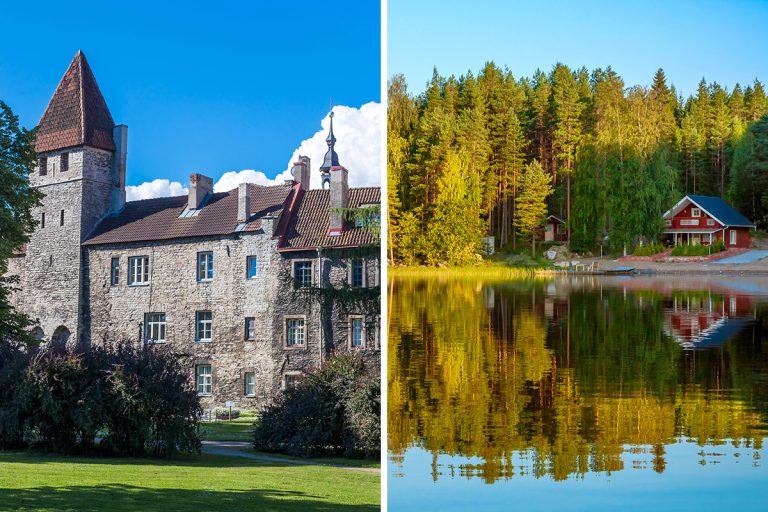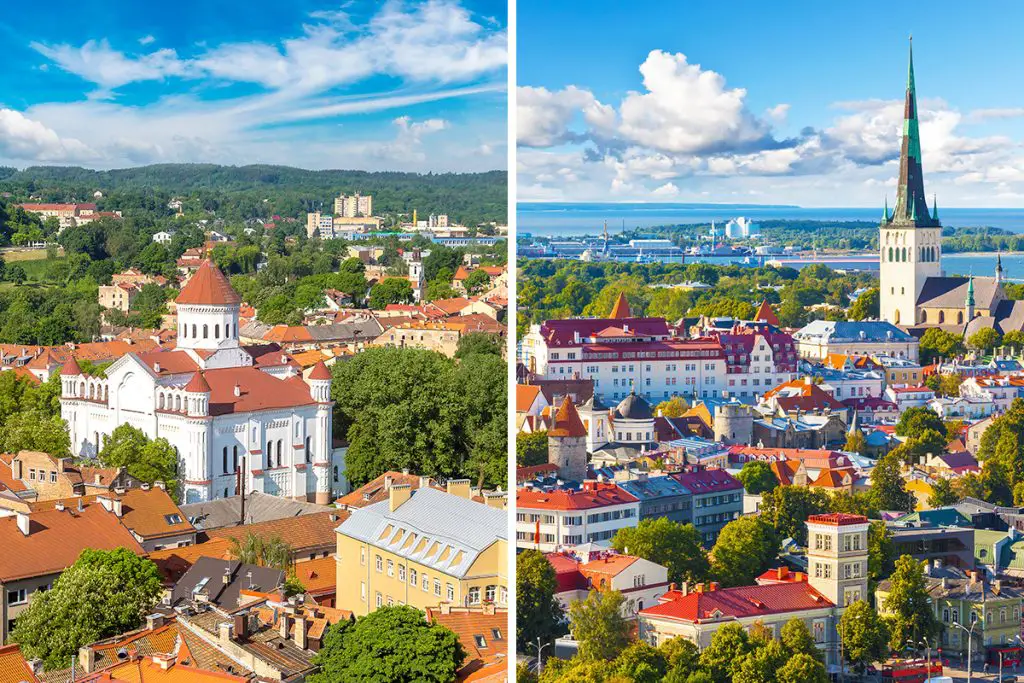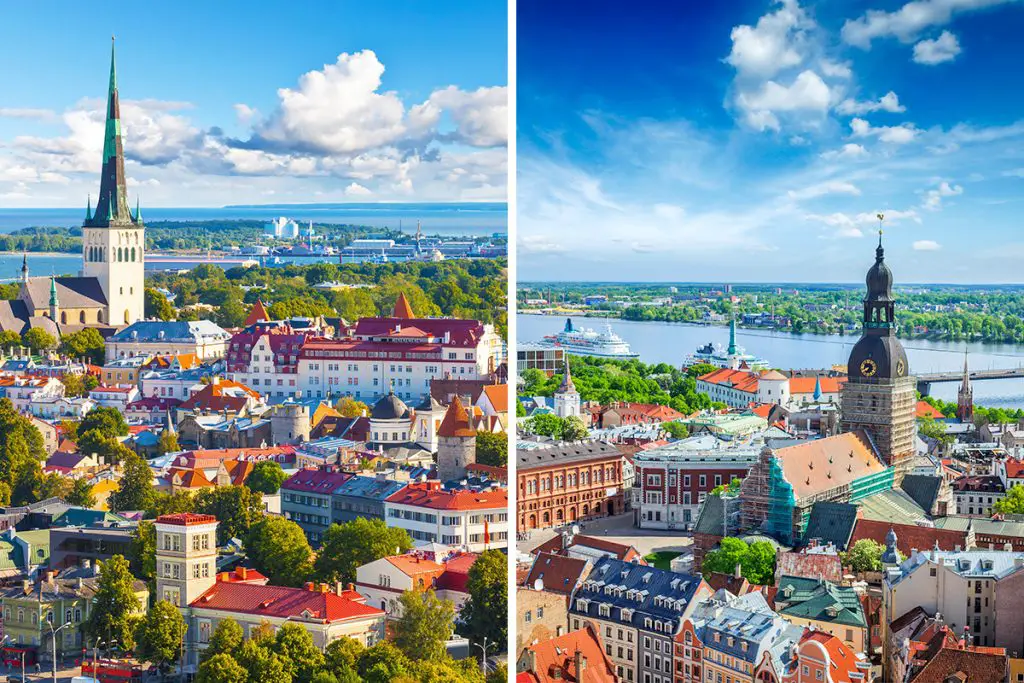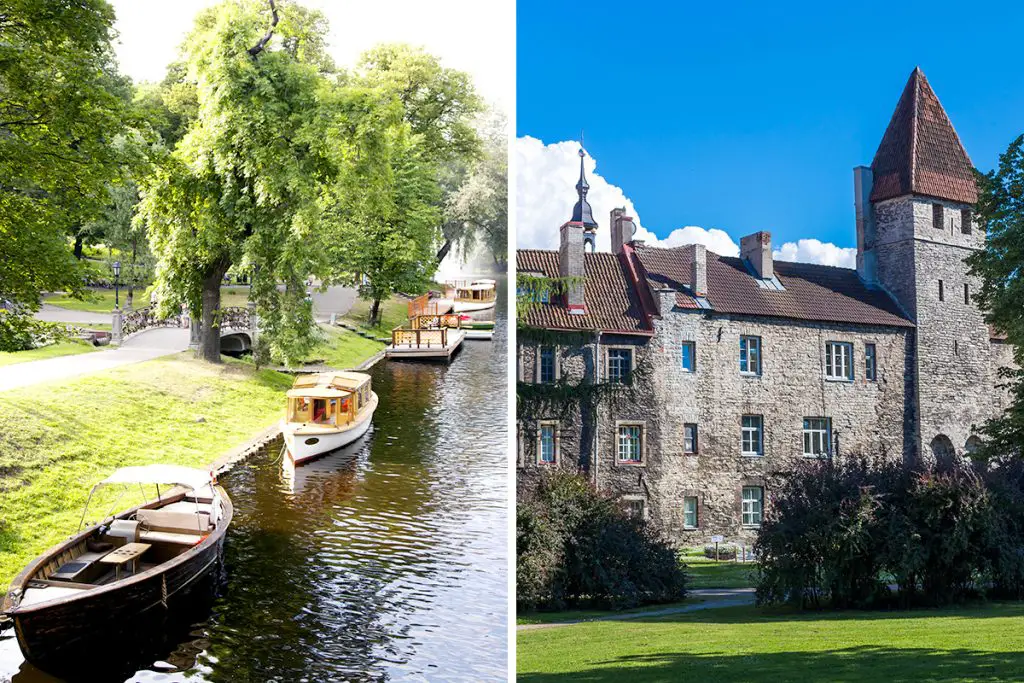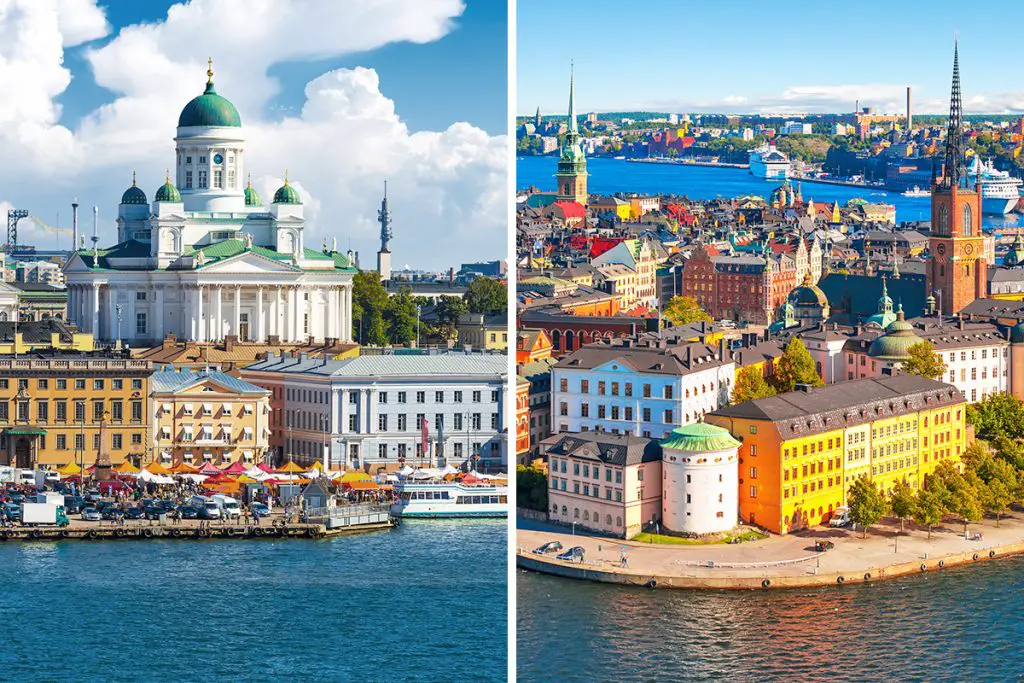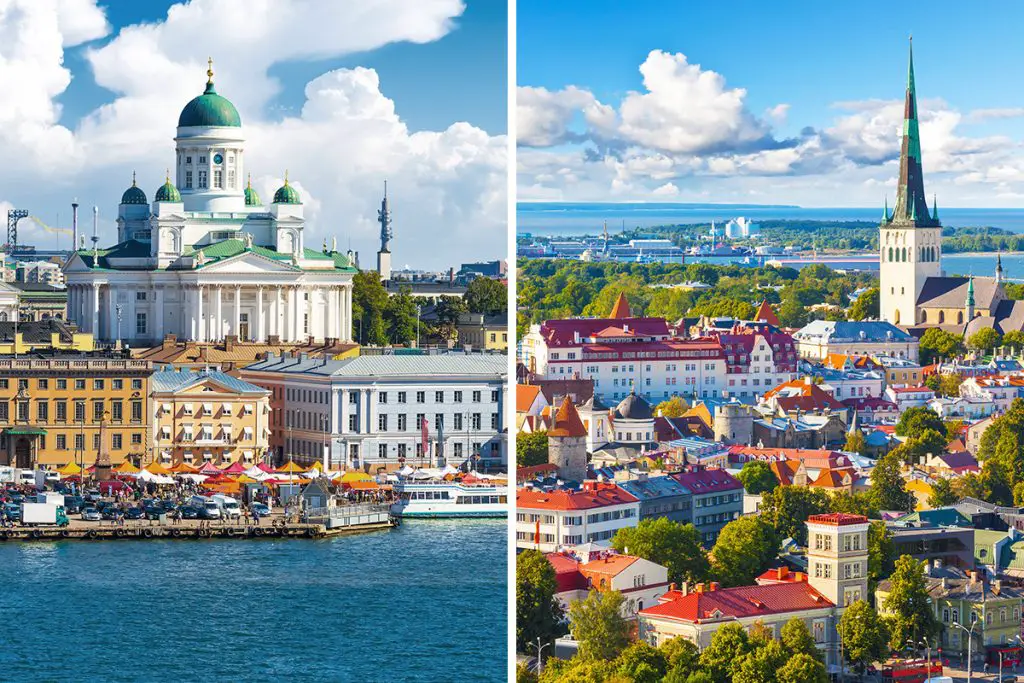Both countries have something truly unique to offer. Estonia surprises visitors with its tech-savvy atmosphere mixed with historic elegance. Finland captures hearts with its blend of cultural richness and natural beauty. Curious to find out more? Keep reading to see which destination best aligns with your interests!
History & Culture
When it comes to history and culture, both Estonia and Finland have incredible stories to share. Each country has its own set of traditions and historical landmarks, making them captivating destinations. Let’s dive into what sets them apart.
Estonia has a rich and varied history. Once a medieval trading powerhouse, its capital Tallinn retains much of its old-world charm. Estonia was part of the Soviet Union but has rapidly evolved into a tech hub since gaining independence in 1991.
The country’s digital transformation doesn’t overshadow its historical essence; rather, it makes for an intriguing blend of the old and the new.
Finland, in contrast, has been independent for a longer period, since 1917. Its history is deeply influenced by its relationships with neighboring countries like Sweden and Russia.
The Finns have a deep respect for nature, seen in their cultural practices and folk tales. Whether it’s the significance of the midnight sun or the traditional wooden homes known as “mökki,” Finnish culture reflects a harmonious blend of past and present.
While both countries are in northern Europe, their cultural identities are distinct. Estonia takes pride in its advanced digital society, blended with medieval architecture and traditions. On the other hand, Finland values its cultural heritage, emphasizing the importance of nature and long-standing traditions in daily life.
So, when it comes to history and culture, your choice between Estonia and Finland boils down to what intrigues you more. Are you captivated by a society that mixes medieval history with cutting-edge technology? Or does a culture deeply rooted in nature and tradition call out to you? Either way, you’re in for a journey that enriches the soul.
Attractions & Activities
When considering a trip to either Estonia or Finland, one of the most exciting aspects is the wide range of attractions and activities. Both countries offer a fascinating array of experiences that can make your trip truly unforgettable. Let’s delve into what each destination has to offer.
In Estonia, one of the most iconic landmarks is the Alexander Nevsky Cathedral in the capital city, Tallinn. This grand, onion-domed church is not just a feast for the eyes but also offers you a glimpse into the country’s complex history with Russia.
For outdoor activities, you can take a hike in Lahemaa National Park. Covering 725 square kilometers (about 280 square miles), this park gives you the chance to explore the diverse landscapes of Estonia, from dense forests to stunning cliff formations.
Finland, on the flip side, offers you an amazing experience with natural phenomena like the Northern Lights. One of the best spots to witness this spectacle is in Finnish Lapland, which is far above the Arctic Circle.
If history excites you, you can explore Suomenlinna, a sea fortress in Helsinki. Spread across six islands, Suomenlinna takes you on a journey through Finland’s military and maritime history.
Estonia’s attractions often revolve around its mix of modernity and medieval heritage. In Finland, the attractions tend to be more nature-oriented or related to its unique cultural history. Whether it’s exploring ancient cathedrals in Estonia or chasing the Northern Lights in Finland, both countries offer activities that are as educational as they are fun.
So, to sum it up, your choice of attractions and activities depends on your interests. Are you keen on stepping into the pages of a medieval storybook? Then Estonia might be your pick. If, however, you’re drawn to natural wonders and historical fortresses, Finland will captivate your imagination.
Eating, Drinking & Nightlife
If the way to your heart is through your stomach, then Estonia and Finland have got you covered. Both countries have vibrant culinary scenes, distinct drinking cultures, and exciting nightlife. Let’s explore what makes each destination unique in these aspects.
When it comes to eating, Estonian cuisine often blends Baltic and Scandinavian influences. Dishes like “räim,” a type of Baltic herring, and “kama,” a traditional Estonian grain mixture, are local favorites. Finnish food also leans toward hearty dishes suitable for cold weather. Think of “karjalanpiirakka,” a savory rice pie, or the classic “lohikeitto,” a creamy salmon soup.
In the realm of drinking, Estonia has been making a name for itself in craft beer. Breweries like Põhjala in Tallinn are garnering international attention for their innovative brews. Finland, on the other hand, is more famous for its unique liquors like “Koskenkorva” and the cloudberry liqueur known as “Lakka.”
As for nightlife, Estonia’s capital, Tallinn, is becoming increasingly popular for its mix of cozy bars and energetic nightclubs. Finland’s Helsinki offers a similar mix but adds its own flavor with venues often featuring live music, especially jazz.
In summary, whether you’re a foodie, a drink enthusiast, or a night owl, both Estonia and Finland offer unique experiences. Estonian cuisine gives you a taste of both Baltic and Scandinavian flavors, while Finland leans more towards traditional hearty dishes. If you’re into craft beers, Estonia is the place to be, but for unique liquors, Finland takes the cake. And when the sun goes down, both capitals know how to keep the party going.
Shopping
When you’re out exploring Estonia and Finland, taking a little piece of your journey home is part of the experience. Both countries offer a variety of shopping opportunities that reflect their unique cultures and crafts. Let’s see what you can expect in each destination.
Estonia is renowned for its traditional handicrafts like knitted items and intricately designed ceramics. If you’re in Tallinn, don’t miss the historic Katariina Guild, where artisans sell handmade goods. Finland excels in design items. You may have heard of brands like Marimekko or Iittala; these are Finnish companies known for their stylish, high-quality products.
While Estonia focuses more on traditional crafts, Finland is a hub for modern design. You can find anything from cutting-edge furniture to unique glassware in shops like Artek in Helsinki. In Estonia, the emphasis is on crafts that have been passed down through generations, which you can find in small boutiques and local markets.
In summary, your shopping experience in either Estonia or Finland will be rich and rewarding but in different ways. Estonia enchants with its historic crafts, while Finland captivates with its modern design. Either way, you’re sure to bring home something special to remember your trip by.
Accommodation
Finding the perfect place to stay is a crucial part of any trip. Both Estonia and Finland offer a wide range of accommodations that can make your stay comfortable and memorable. Let’s see what each destination brings to the table.
Estonia boasts charming bed and breakfasts, especially in the capital, Tallinn. Here, you can stay in renovated medieval buildings that take you back in time. You’ll often find these establishments in the Old Town area, offering a cozy and historical experience.
On the other hand, Finland has an abundance of modern hotels, many of which incorporate sleek Nordic design elements. Imagine staying in a hotel with enormous glass windows that allow you to witness the Northern Lights from the comfort of your room!
In Estonia, there are also rustic lodges in natural settings like national parks, perfect for travelers looking to connect with the great outdoors. Finland goes a step further with its unique accommodation options like glass igloos and treehouses in Lapland, providing a one-of-a-kind experience.
So when it comes to accommodations, Estonia offers historical charm and an opportunity to stay in natural settings. Finland, however, takes a more modern approach, offering not just comfortable stays but also unique experiences that connect you with nature in a modern way.
In summary, both Estonia and Finland have their own distinct styles of accommodation. Your choice will depend on whether you’re seeking a historical setting or a more modern, design-oriented experience.
Family-Friendliness & Children’s Activities
Traveling with family? Both Estonia and Finland have a host of activities and attractions that kids will love. Let’s take a closer look.
Estonia offers numerous museums that are interactive and educational. The Energy Discovery Centre in Tallinn, for instance, makes learning about science fun with hands-on exhibits. Finland has similar offerings like Heureka, the Finnish Science Centre, which features interactive displays on various topics from physics to biology.
In Estonia, there are also adventure parks like the Tallinn Zoo, where kids can come face-to-face with various species of animals. Finland goes beyond that with attractions like Santa Claus Village in Rovaniemi, where kids can meet Santa any day of the year!
Both countries also offer fantastic natural landscapes where families can enjoy outdoor activities like hiking, berry picking, and canoeing. These experiences provide kids with a unique opportunity to connect with nature and learn about local ecosystems.
In a nutshell, both Estonia and Finland offer a range of family-friendly activities. Whether it’s interactive museums, zoos, or nature activities, both countries make sure that the little ones have plenty of fun things to do.
Getting There & Getting Around
Whether you’re planning to visit Estonia or Finland, understanding how to get there and move around is essential. Let’s dive into the transportation options for each.
To reach Estonia, the main international airport is Lennart Meri Tallinn Airport, located about 4 kilometers (about 2.5 miles) from Tallinn’s city center. Finland’s main entry point is Helsinki-Vantaa Airport, situated approximately 20 kilometers (about 12.4 miles) from Helsinki’s downtown area. Both airports are well-connected to various international destinations.
When it comes to getting around, Estonia offers an extensive bus network that connects not just cities but also smaller towns. Finland provides a more comprehensive railway system that’s quick and efficient, especially for travel between major cities like Helsinki, Tampere, and Turku.
In Estonia, ride-sharing services and taxis are also readily available in cities like Tallinn. In Finland, public transportation like trams and buses are more prevalent, making it easy to move around in the urban areas.
In summary, both Estonia and Finland offer robust transportation options. While Estonia leans more towards bus and ride-sharing services for internal travel, Finland provides an efficient railway system and excellent public transportation in its cities. Your choice will depend on your travel style and the kind of convenience you’re looking for.
Weather
Weather can be a big deal when you’re planning a trip. The climate in both Estonia and Finland has its own unique charms that could make your visit extra special. So, what can you expect from these northern neighbors?
Estonia generally experiences milder weather compared to Finland. In the summer, especially in July, Estonia can have temperatures ranging from 60°F to 75°F (15°C to 24°C). In Finland, the temperatures in summer are quite similar, but they can get a tad cooler at times, averaging around 57°F to 71°F (14°C to 22°C).
Winter in Estonia usually settles in around November and lasts till March. The coldest month is typically January, with temperatures dropping to about 17°F to 30°F (-8°C to -1°C). In Finland, winters are colder and longer, stretching from November to April. In January, the thermometer can dip between 5°F and 23°F (-15°C to -5°C).
Both countries share the unique phenomenon of the “Midnight Sun” during the summer when the sun barely sets. It’s a magical experience, but remember that it also means experiencing polar nights in winter when the sun barely rises.
In summary, Estonia offers slightly milder weather, while Finland leans more towards colder temperatures, especially in winter. Your choice will depend on your preference for cooler or slightly warmer conditions.
Safety
Safety is often at the top of your list when choosing a destination. Estonia and Finland are generally considered safe countries, but there are subtle differences between the two.
Estonia has a lower crime rate and is considered one of the safest countries in Europe. Finland also has a very low crime rate and ranks high on global safety indexes. In both countries, petty crimes like pickpocketing could occur, but they are relatively rare.
In terms of emergency services, both countries are well-equipped. Estonia and Finland offer excellent healthcare and quick response times from police and fire departments.
Unique to both countries is the evergreen topic of “wildlife safety.” While visiting rural areas or national parks, you need to be aware of local fauna, like bears and elks in Finland, and wild boars in Estonia.
To sum up, both Estonia and Finland offer high levels of safety, excellent emergency services, and low crime rates. Your choice will come down to specific needs and preferences.
Cost
Budgeting is a key part of any travel plan. Estonia and Finland offer different experiences at different price points, so let’s get into the nitty-gritty.
Estonia generally offers more affordable options for lodging, food, and transportation. A meal in a mid-range restaurant could cost around 28 Euros ($29.50-$31.00). Finland, on the other hand, is more on the expensive side. A similar meal might set you back about 40 Euros ($42.00-$44.50).
When it comes to accommodations, Estonia has a range of budget-friendly options. In Finland, hotels and lodges, especially those offering unique experiences like glass igloos, can be pricier.
Transportation costs in Estonia are generally lower compared to Finland. A local bus ticket in Estonia might cost around 2 Euros ($2.00-$2.50), while in Finland, it could be around 3 Euros ($3.00-$3.50).
In summary, Estonia is generally more budget-friendly, offering lower costs for food, lodging, and transportation. Finland provides a luxurious experience but at a higher price point. Your choice will depend on your budget and the kind of experience you’re seeking.
Which Is Better – Estonia or Finland?
Choosing between Estonia and Finland isn’t a simple task. Both countries offer a rich tapestry of experiences, each with its unique allure. Let’s summarize what we’ve explored to help you make an informed choice.
History & Culture: Estonia and Finland share historical ties and similarities in culture, but they express it in different ways. Estonia leans towards a milder weather experience and boasts a mix of old-world charm and modern comfort. Finland offers a robust cultural experience marked by its colder winters and unique traditions.
Attractions & Activities: Both countries offer a wide range of attractions. Estonia is a great choice for those interested in historical sites, while Finland offers unique nature experiences like the Northern Lights and the Midnight Sun.
Beaches: If you’re a beach lover, Estonia’s beaches offer warmer temperatures and are more suited for swimming. Finland’s beaches are more about the stunning natural scenery and are ideal for those looking to explore rather than swim.
Eating, Drinking & Nightlife: Both countries have a vibrant food scene, but Estonia generally offers more budget-friendly options. Finland, on the other hand, offers a luxurious dining experience at a higher price.
Shopping: Estonia offers more affordable shopping options, while Finland is where you’ll find luxury brands and designer goods.
Accommodation: Estonia also has a range of budget-friendly accommodations, whereas Finland offers more high-end, unique places to stay.
Family-Friendliness & Children’s Activities: Both countries are quite family-friendly, but your choice might depend on the specific activities your family enjoys. Estonia offers a mix of educational and fun activities for children, while Finland leans towards outdoor adventures.
Getting There & Getting Around: Both countries have well-developed transportation systems, but getting around Estonia is generally cheaper than in Finland.
Weather: If you prefer milder conditions, Estonia would be the destination for you. But if you love snow and don’t mind the cold, Finland offers a magical winter wonderland.
Safety: Both countries score high on safety, but Estonia has the edge with a lower crime rate and equally excellent emergency services.
Cost: Finally, if budget is a concern, Estonia is more affordable in terms of food, lodging, and transportation. Finland offers a more luxurious experience but at a higher cost.
So, when should you choose Estonia and when should you go for Finland? If you’re looking for a more budget-friendly, mild-weather trip with a blend of historical and modern attractions, Estonia is your go-to. However, if you’re in for a luxurious, culturally rich vacation with a love for colder climates, Finland won’t disappoint. Your ideal destination ultimately depends on what kind of experience you’re looking for.

